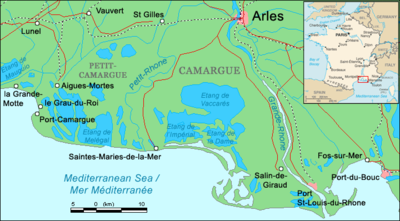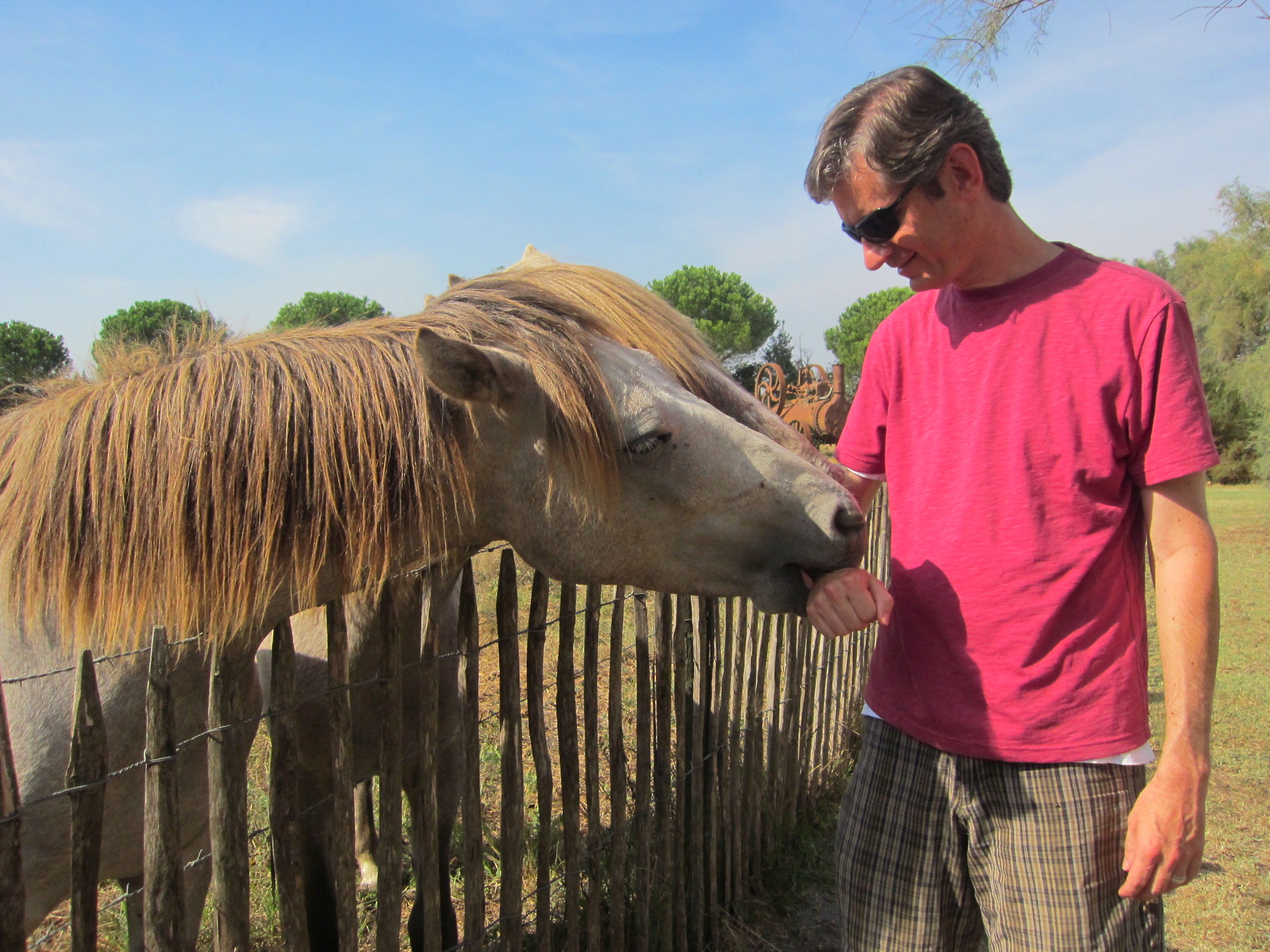 The Camargue is a wetland on the coast of the Mediterranean Sea. Camargue horses (wild and not), bulls and birds of all kinds populate this area. Sources of income include sea salt, rice farming, lavendar and olive products.
The Camargue is a wetland on the coast of the Mediterranean Sea. Camargue horses (wild and not), bulls and birds of all kinds populate this area. Sources of income include sea salt, rice farming, lavendar and olive products. 
We went to the Parc Ornithologique de Pont de Gau bird sanctuary. The park is filled with marshy lagoons with flocks of flamingos, swans, dozens of kinds of ducks, geese, egrets, etc. We also saw a muskrat hanging out, eating grass. This became less wondersome when we found a family of three muskrats a few feet from the snack shop grazing on grasses.



Up next was Saintes-Maries-de-la-Mer (“Saint Marys of the Sea”). This coastal town is famous as the supposed place where the three Marys (Mary Salome, Mary Jacobe, and Mary Magdalene) first landed when they fled Egypt. The patron saint of the local gypsies is Saint Sara (aka Black Sara), who may have been an Egyptian slave that arrived with the Marys. We approached a lovely stone church and were spotted by several gypsy women who tried to sell us religious medals. While Sharon perused the local shops for booty, Chris went up into the church tower. You can walk around the perimeter of the church roof and see the town and environs for many miles around, and actually you can climb on the gabled stone roof itself. A little scary but fun!

Heading back inland the way we came, our next stop was the Chateau de Avignon. Alas, closed on Tuesdays.

Just down the road a bit further was the Musée de la Camargue, which is a modest farmhouse that recreates the rural conditions of the Camargue farmer. Alas it was closed, in defiance of the sign saying it was supposed to be open. Next to the museum was a large fenced in pen with two horses standing next to each other. One of the horses got to its knees and then rolled over and took a very ungraceful dust bath. We went over to the pen and Sharon clucked at them, upon which they both came right over to the fence and let us pet them and feed them almonds. Once we ran out of almonds they nuzzled our arms, and by “nuzzle” we mean “chewed on our skin with their lips and even teeth”.  We played and petted them for about 15 minutes and we were sad to leave.
We played and petted them for about 15 minutes and we were sad to leave.

We headed west out of the Camargue wetlands proper to towards Aiges-Mortes, an entire town within a gigantic fortress.

The exterior walls are ramparts with firing holes where the soldiers would try to fend off approaching armies. We went up into a tower of the fortress where the evil protestants were held at one time. We walked part of the ramparts and could see for miles around. People live insi de the fortress and have shops and cafes going, where they refuse to serve meals at appropriate times. The museum shop had a cat that was very used to the crowds of young students on field trips.
de the fortress and have shops and cafes going, where they refuse to serve meals at appropriate times. The museum shop had a cat that was very used to the crowds of young students on field trips.
We returned to Port Camargue and went to the “Super U”, sort of a multi-purpose store with amazing (to us) groceries and clothes and hardware. Probably the French equivalent of Walmart. We had dinner in Le Grau-du-Roi and returned home, exhausted.